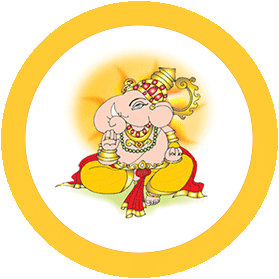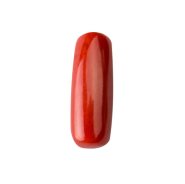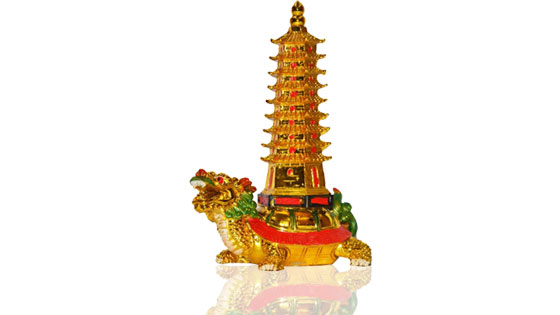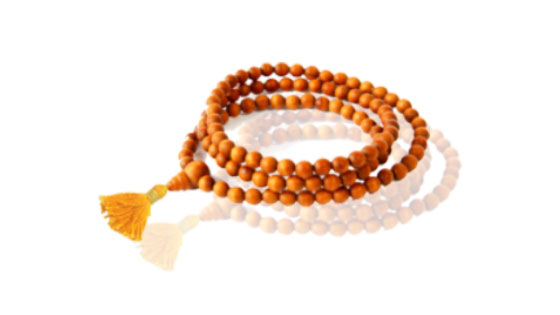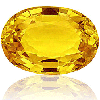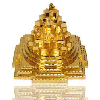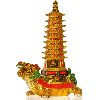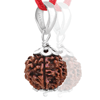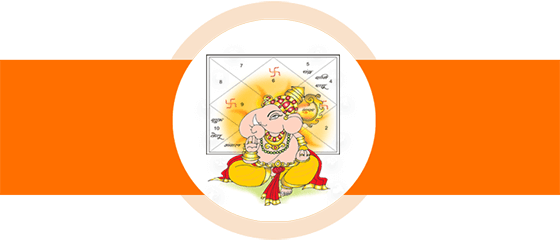Pranayama: Significance, Breathing Exercises
The term 'Pranayam' has its roots in Sanskrit language where, 'prana' refers to the vital energy that our body needs to stay alive and 'ayam' means control. Hence pranayam is the art of controlling the rhythms of pranic energy through breathing, leading to a healthier body and mind. Breath is nothing but the physical manifestation of prana which is the energy responsible for life force. It is imperative to understand the importance of prana to be able to understand and practice pranayam. Prana is the universal life force which flows in our body through thousands of energy channels called 'nadis' and energy centers called 'chakras'. One's state of mind can be gauged by the quantity and quality of prana and the way it flows through the nadis and chakras.
Pranayama Articles
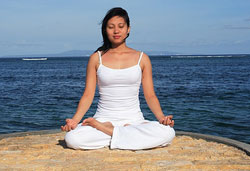 Pranayam builds a perfectly harmonious relationship between body, mind and soul by releasing the flow
of energy, positivity and enthusiasm in one's body. It enhances the quality and quantity of prana by
clearing the blocked nadis and chakras in body. Pranayam not only makes one physically strong, mentally
peaceful and spiritually enlightened but also boosts self confidence and levels of calmness and happiness.
Five kinds of prana are said to be accountable for numerous pranic acts in a body, which are as follows:
Pranayam builds a perfectly harmonious relationship between body, mind and soul by releasing the flow
of energy, positivity and enthusiasm in one's body. It enhances the quality and quantity of prana by
clearing the blocked nadis and chakras in body. Pranayam not only makes one physically strong, mentally
peaceful and spiritually enlightened but also boosts self confidence and levels of calmness and happiness.
Five kinds of prana are said to be accountable for numerous pranic acts in a body, which are as follows:
- Prāṇa: It represents the breath being exhaled through lungs.
- Apāna: This part of prana represents down and outward energy and resides in hips and gut.
- Uḍāna: It is said to be the rising energy and responsible for uplifting the Kundalini. This prana resides in the throat and represents the act of sound production like singing, speaking, laughing, crying, etc.
- Samāna: It represents the digestive heat and resides between prāṇa above and uḍāna below in the belly.
- Vyāna: It is the circulated energy residing all over the body.
Out of these five, Prāṇa and Apāna are important, as the former flows upwards and the latter flows downwards. Practicing these deep breathing exercises help in maintaining an equilibrium in life as well as other pranic activities, hereby resulting into a healthier mind, body and soul.
Types Of Pranayama
Natural Breathing
Natural breathing is something one is naturally bound to do. It is the beginning, where one understands how to breath in and out while focussing on the breathing patterns. It is relaxing in nature and is a basic point when meditating. This is how one becomes aware of this phenomenon:
- Sit comfortably with relaxed shoulders, closed eyes and open chest.
- Notice if you’re breathing deeply or in a shallow manner and what part of your body moves with the rhythm.
- Feel the temperature of your breath.
- Pay attention to the nostrils when inhaling and exhaling.
Basic Abdominal Breathing
This breathing exercise must be done before commencing the routine for a few minutes. One must breath from the diaphragm. This is how it should be done properly:
- Sit in a comfortable situation using a chair or any other kind of support.
- On the other hand, you can lie in Shavasana.
- Place one hand on chest and the other on belly, and inhale deeply using your diaphragm.
- Continue this exercise, as using diaphragm improves the efficiency of lungs and marks a positive effect on liver, heart, intestines and stomach.
Thoracic Breathing
This kind of breathing is known to be the first step towards creating awareness about how to breathe and learning yogic breathing. This helps to expand more energy than normal abdominal breathing. One must follow the following steps:
- Start with being aware of your breathing techniques.
- Focus on using your rib-cage while breathing and expanding it rather than diaphragm.>
- Your chest must expand while inhaling and contract while exhaling.
Clavicular Breathing
It is done during the period of great exertion or when suffering from airways health problems such as asthma with thoracic breathing. To do this, one must breath while pulling up the collarbones and upper ribs by neck and sternum. This is how it’s done:
- Start with being aware of your breathing techniques.
- Carry on thoracic breathing for some time.
- After you’re done, take a full breath in and try taking in small breaths in order to expand upper lungs.
- This will result in shoulders and collarbones rising up slightly.
- Next, exhale and relax your neck, then upper chest and finally ribcage.
Yogic Breathing
Doing this exercise involves chest, clavicular region and abdomen. It enables one to breathe in and out to the maximum, combined with the art of deep breathing. Follow the steps to do this pranayama properly:
- Inhale slowly while rising the abdomen first, then chest, then ribs and at last collar bones.
- Then exhale slowly, allowing the collar bones to go down first, then ribs, chest and at last abdomen.
-
Practice this pranayama regularly.
Fast Breathing
There are six types of fast breathing exercises one should carry out:
- Type 1: Using both nostrils to inhale and exhale.
- Type 2: Inhaling and exhaling through the left nostril only.
- Type 3: Inhaling and exhaling through the right nostril only.
- Type 4: Using left nostril to inhale and right one to exhale.
- Type 5: Using right nostril to inhale and left one to exhale.
-
Type 6: Breathing in through right nostril, exhaling through left nostril. Again, breathing in through left nostril, and breathing out through right one.
Sit and relax, breathe normally. Follow the appropriate breathing pattern as prescribed and focus on the inhaling and exhaling. Increase the speed as well.
Anulom Vilom Pranayama – Alternate Nostril Breathing
Doing this pranayama helps to nourish the body with lots of oxygen and purifies blood of any toxin. Also, it helps to stimulate brain cells and lowers anxiety, stress. This pranayama helps to balance out all the chakras in body along with certain functional systems of the body. This is how it is carried out:
- Use your right hand to make Pranava mudra. Bend the first two fingers, index and middle towards the palm with little and ring finger being erect.
- Bring the hand closer to the right nostril, blocking it with your thumb. Inhale from the left nostril.
- Now, switch your thumb and block the left nostril using ring finger of the right hand, being supported by the little one and exhale from the right nostril.
- In such a way, keep moving your fingers sideways.
Cooling Breath - Sheetali, Sitkari, Kaki Mudra Pranayama
-
Sheetali – Open your mouth, extend your tongue to maximum and roll it from both sides to form a tube. Inhale through that tube and exhale via nose while closing the mouth.
-
Sitkari – Separate your lips while bringing your teeth together. Expose your teeth, keep your tongue flat and breathe in through the teeth. Now, close your lips and exhale through nostrils.
-
Kaki Mudra – Widen your eyes, focus on your nose tip and pucker your lips like a beak. Breathe through your lips, close and exhale through nose.
Ujjayi Pranayama – Victorious Breath
Doing Ujjayi pranayama helps to maintain balanced blood circulation. It also cures insomnia, depression, anxiety, stress, hereby providing a tranquilizing effect on the body. It helps to stimulate muscles and parasympathetic nervous system as well. This is how it is done:
- Maintain focus on the throat.
- Inhale and exhale through the throat while contracting it.
- Relax and be slow.
Bhramari Pranayama – Humming Bee Breath
Doing this pranayama helps to strengthen throat muscles, voice, cure anxiety, stress, high blood pressure and bad hearing. It has proven to be helpful during labour or even post labour when soothing a baby. Bhramari Pranayama must be done:
- Breathe normally through nose.
- When exhaling, hum the letter “m” in a smooth fashion.
- In case you want to go up, block the ears with your fingers and feel the vibrations.
Bhastrika Pranayama – Breath of Fire
Doing Bhastrika Pranayama helps to purify blood, cleans up the air passage, enhances complexion and reduces fat. It increases the metabolism and eliminates harmful mucus from within the body. It calms the nervous system. Follow these steps:
- Breathe in heavily and forcefully exhale through the nose.
- Focus when inhaling that the abdomen goes out, and vice versa when exhaled.
- Avoid expanding shoulders or chest.
- Slightly increase the speed.
Surya Bhedana Pranayama – Right Nostril Breathing
According to the Vedas, Surya Bhedana Pranayama means to awaken Surya chakras and energies in one’s body. It helps to balance acidity, mucus, nervous system and heats the body. Follow the below mentioned steps:
- Sit straight in Padmasana and close your eyes.
- Breathe through your right nostril while shutting your left nostril with ring and little finger.
- Shut your right nostril with your thumb.
- Now, release your left nostril and exhale while the right nostril is still shut.
Benefits of Pranayama
Pranayama, or the Art of Breathing, is considered to be an elementary part of yogic science. It includes three simple steps, i.e. Puraka or Inhalation, Kumbhaka or Retention and Recaka or Exhalation. Slow inhalation results in intaking good levels of oxygen followed by retaining that oxygen to exhale impurities.
One must use right hand (thumb and fingers) to control their mode of breathing, unless one is left-handed. One mustn’t try to master the pranayamas in a shorter span. They give lasting results, and help to maintain physical, mental and emotional health. Here are some benefits of doing Pranayama:
-
Increases Blood Circulation: Doing pranayama helps to increase blood circulation and improves cardiovascular body functions. It helps to enhance the levels of oxygen in body as well.
-
Eliminates Risk of Hypertension: Pranayama helps to relax and gets rid of stress and hypertension. In such a manner, breathing patterns get stabilized.
-
Improves Breathing: Pranayama is the best way to cope with irregular breathing and helps to improve the functioning of lungs. This exercise gives favorable results to those who have asthma and other breathing problems.
-
Treats Depression: It treats mental health, mostly depression, anxiety and low self-esteem. Anyone facing such disorders must do pranayama daily.
-
Shedding Some Extra Kilos: Many health enthusiasts swear by the results of Pranayama. If practised regularly, one can shed that extra fat, tone their body easily and reduce weight.
-
Detoxification: Pranayama is an excellent resort to eliminate every harmful toxin from the body. From mental to physical toxics, pranayama helps to gain control over these and flush them out quickly.
-
Happy Digestion: Practicing pranayama such as Bhastrika Pranayama, Anulom Vilom or Kapalbhati helps to alleviate digestive issues and decreases bloating.
-
Strengthens Immune System: It works as a shield for the body and helps to strengthen the immune system.
-
Eliminates Sinusitis and Clears Nasal Passages: By doing pranayama, one can cure their stuffy nose easily. Nasal passages get cleared. Also, one can treat sinusitis through the pranayama Bhastrika.
-
Favorable for Pregnant Women: Doing Pranayama is favorable for women who are pregnant or into labour. It helps to regulate the breathing patterns and allow women in labour to concentrate properly and prepare themselves.
-
Good for Skin: Doing regular Pranayama eliminates wrinkles and blemishes from the skin and makes it fresh. This tool helps to maintain a good skin health.
Tips Before Getting Started
Certain things must be kept in mind while starting a Pranayam regime, which are as follows:
-
Be Your Own Judge: Try not to follow blindly and be your own judge. In case you feel any discomfort, restricted while breathing, light-headed or choked, stop immediately. Start with normal breathing and carry out these exercises under guidance.
-
Do Not Try To Force Or Restrict Your Breathing Pattern: Never compromise on the breath quality and do the best. Do not change your breathing cycle all of a sudden, as it might lead to lightheadedness or breathlessness. Practice properly and stay calm. Eventually, you’ll be able to extend beyond your lung capacity.
-
Practice Patiently: Pranayama must be done with great patience, awareness and care. Focus on the breathing patterns and do not try to hush. Slowly but steadily, you’ll start noticing the benefits.
-
Take Precautions: Take precautions in case you’re diabetic, suffer from low or high blood pressure, vertigo, epilepsy, are pregnant, have some heart condition and much more. Consult a doctor and specialist before going ahead.
We hope that you like this article on Pranayama, its types, benefits and tips. Visit more pages to learn more about astrology and get an insight into this miraculous world.
Astrological services for accurate answers and better feature
Astrological remedies to get rid of your problems
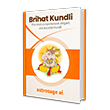
AstroSage on MobileAll Mobile Apps
AstroSage TVSubscribe
- Horoscope 2026
- राशिफल 2026
- Calendar 2026
- Holidays 2026
- Shubh Muhurat 2026
- Saturn Transit 2026
- Ketu Transit 2026
- Jupiter Transit In Cancer
- Education Horoscope 2026
- Rahu Transit 2026
- ராசி பலன் 2026
- राशि भविष्य 2026
- રાશિફળ 2026
- রাশিফল 2026 (Rashifol 2026)
- ರಾಶಿಭವಿಷ್ಯ 2026
- రాశిఫలాలు 2026
- രാശിഫലം 2026
- Astrology 2026









